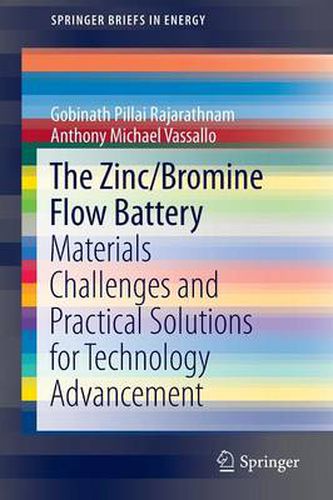Readings Newsletter
Become a Readings Member to make your shopping experience even easier.
Sign in or sign up for free!
You’re not far away from qualifying for FREE standard shipping within Australia
You’ve qualified for FREE standard shipping within Australia
The cart is loading…






This title is printed to order. This book may have been self-published. If so, we cannot guarantee the quality of the content. In the main most books will have gone through the editing process however some may not. We therefore suggest that you be aware of this before ordering this book. If in doubt check either the author or publisher’s details as we are unable to accept any returns unless they are faulty. Please contact us if you have any questions.
This book presents a detailed technical overview of short- and long-term materials and design challenges to zinc/bromine flow battery advancement, the need for energy storage in the electrical grid and how these may be met with the Zn/Br system. Practical interdisciplinary pathways forward are identified via cross-comparison and comprehensive review of significant findings from more than 300 published works, with clear in-depth explanations spanning initial RFB development to state-of-the-art research in related systems. Promising strategies described include the use of modern electrochemical techniques to study and optimize physical processes occurring within the system during operation, improving zinc electroplating quality during the charge phase through the strategic use of organic additives, as well as identifying suitable catalysts to optimize the bromine/bromide redox couple. The primary focus is on research and development of novel materials in the areas of electrolyte formulation and multifunctional smart electrode surfaces to achieve a higher degree of control over processes at the electrode-electrolyte interface. The strategies suggested in this book are also highly adaptable for use in other similar flow battery systems, while the unique cross-comparative approach makes it a useful reference and source of new ideas for both new and established researchers in the field of energy storage and battery technology.
$9.00 standard shipping within Australia
FREE standard shipping within Australia for orders over $100.00
Express & International shipping calculated at checkout
This title is printed to order. This book may have been self-published. If so, we cannot guarantee the quality of the content. In the main most books will have gone through the editing process however some may not. We therefore suggest that you be aware of this before ordering this book. If in doubt check either the author or publisher’s details as we are unable to accept any returns unless they are faulty. Please contact us if you have any questions.
This book presents a detailed technical overview of short- and long-term materials and design challenges to zinc/bromine flow battery advancement, the need for energy storage in the electrical grid and how these may be met with the Zn/Br system. Practical interdisciplinary pathways forward are identified via cross-comparison and comprehensive review of significant findings from more than 300 published works, with clear in-depth explanations spanning initial RFB development to state-of-the-art research in related systems. Promising strategies described include the use of modern electrochemical techniques to study and optimize physical processes occurring within the system during operation, improving zinc electroplating quality during the charge phase through the strategic use of organic additives, as well as identifying suitable catalysts to optimize the bromine/bromide redox couple. The primary focus is on research and development of novel materials in the areas of electrolyte formulation and multifunctional smart electrode surfaces to achieve a higher degree of control over processes at the electrode-electrolyte interface. The strategies suggested in this book are also highly adaptable for use in other similar flow battery systems, while the unique cross-comparative approach makes it a useful reference and source of new ideas for both new and established researchers in the field of energy storage and battery technology.